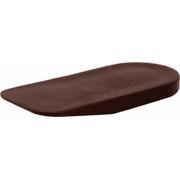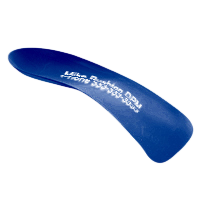Heel lifts are an inexpensive treatment option for limb length discrepancy and Achilles tendonitis. A short leg can cause many different painful conditions.
The presence of a limb length discrepancy or short leg is usually associated with pelvic joint or lumbar spine misalignment and cascading lower back pain. Limb length discrepancy or short leg is usually functional, but may also be anatomical ( knee or hip replacement surgery).
There are a number of musculoskeletal conditions that may aggravate the functional limb length inequality, it is usually due to;
1) a misalignment of one of the sacroiliac joints causing the sacral base to drop to one side, or
2) a rotation either flexion or extension of one of the hip bones out of normal position.
These types of joint misalignment cause a functional
uneven limb length.
Limb length discrepancy is a common symptom in patients with iliac dysfunction and lower back pain.
Short leg syndrome is usually accompanied by other compensatory changes due to the dropping of the sacral base. These include;
1) thoracolumbar scoliosis, and
2) lumbar vertebral rotation.
Heel Lifts and manual therapy may be all that is needed to achieve leg length equality and resolve the symptoms.
There are different limb length correction lifts.
Atlas Biomechanics produces both cork, eva/rubber blend and adjustable heel lifts:
Heel Lifts produced by Atlas Biomechanics include:
3mm (1/8")
6mm (1/4")
9mm (3/8")
12mm (1/2")
Adjustable Cork Heel Lift
Adjustable Eva/Rubber Heel Lift
Teri Green
Atlas Biomechanics
www.atlasbiomechanics.com manufacturers USA heel lifts in bulk discount packs.












